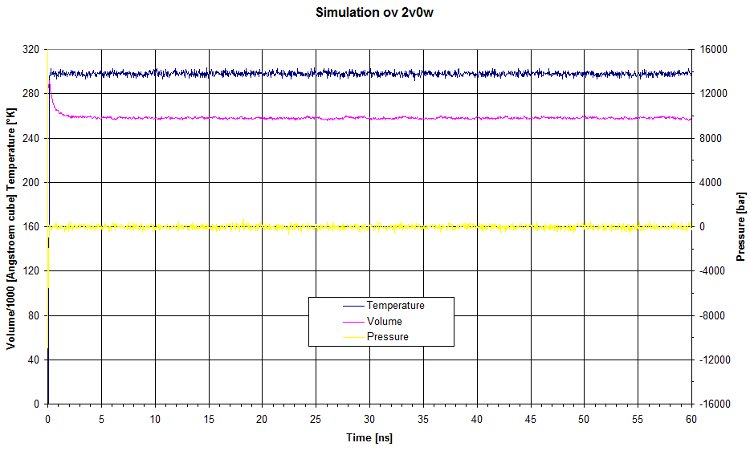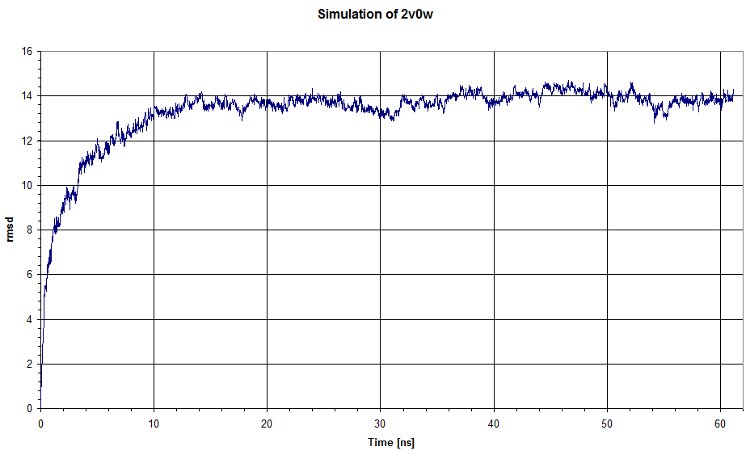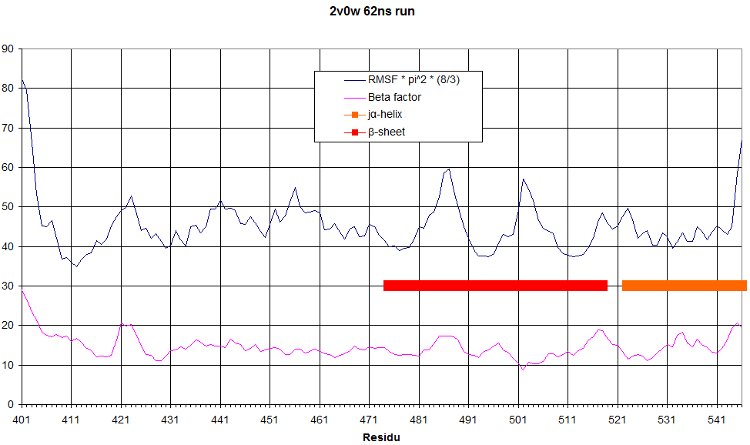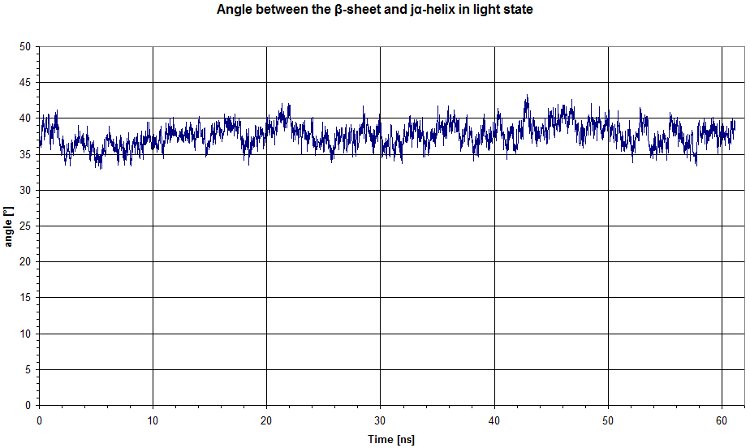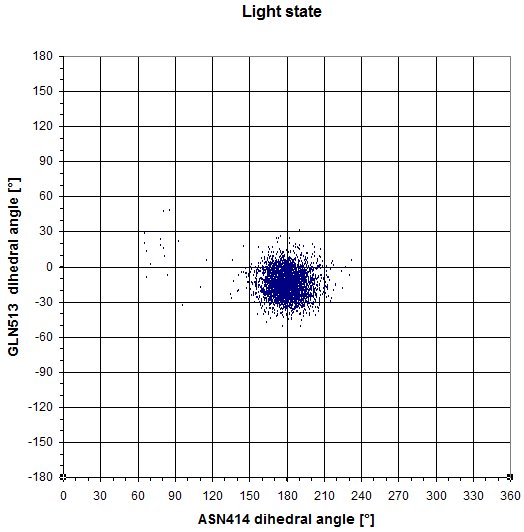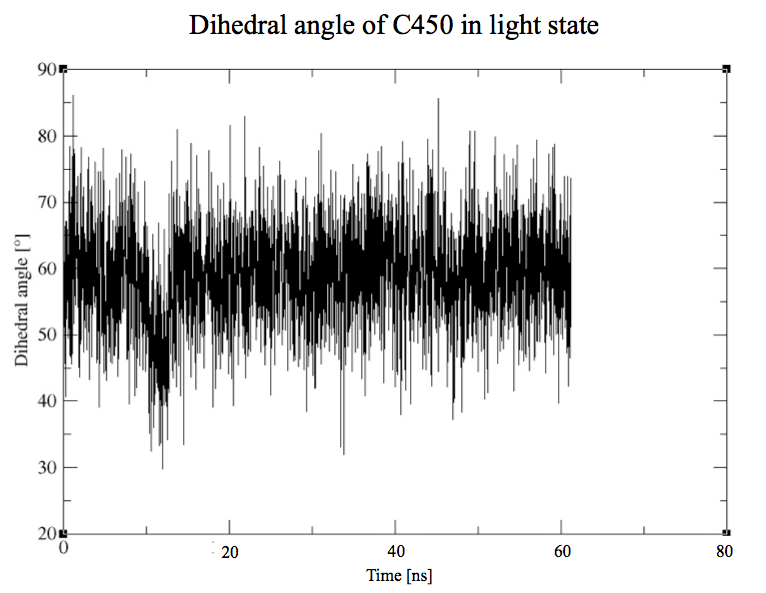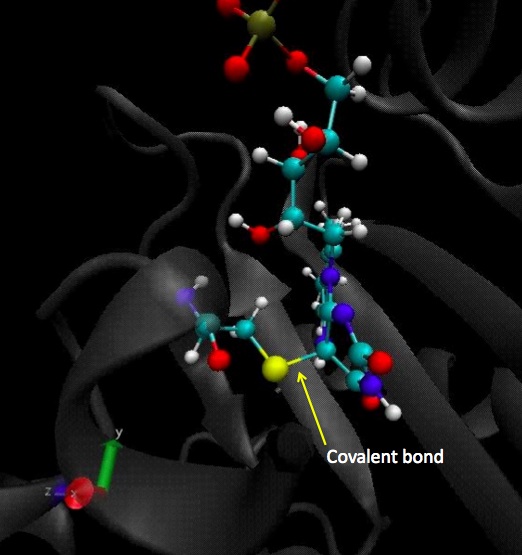Team:EPF-Lausanne/Results/ELS
From 2009.igem.org
Contents |




We run a a 62ns simulation on the 2v0w light state using 32 processors.
Here is a video.
Validation of the light state simulation
PVT
Here are the values of pressure, volume and temperature for this run.
RMSD
The rmsd along the run gives:
RMSF
And the rmsf is:
Analysis of the simulation
As for the dark state, we tried to find a change in the j-alpha helix then looked at the comportment of the residues.
Angle between beta sheet and alpha helix
We ploted the angle between the helix and a strand of the beta sheet. As in the light state we don't see a clear movement.
GLN513 - ASN414
We also redid the same experiments as in the dark state. Here is the plot of the dihedral angle of GLN513 and ASN414. In this case, both residues don't switch to another conformatinal state.
CYS450 - FMN
An interesting residue to study in the light state is the residue n° 450, which is the cystein that reacts with the cofactor. Here we plot the dihedral angle of this residue to see how many time the cystein point toward the FMN. As expected, the residue is now stable because of the covalent bond to the FMN.
We can see that the sulfur atom dosen't move a lot which is completely normal due to its bonding with the C4A carbon atom of the FMN.
 "
"

